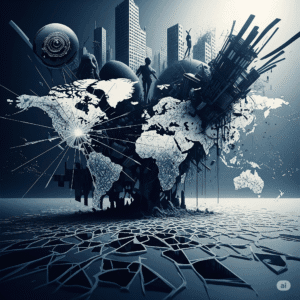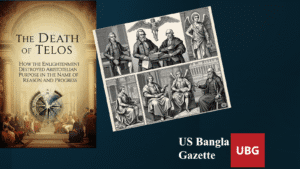Death of Commercial Media as We Know

Western corporate media, once a dominant force in shaping global narratives, faces challenges due to erosion of legitimacy. Years of sensationalism, double standards, and editorial control have damaged its credibility. Disillusioned audiences and former insiders recognize the dysfunctional nature of “mainstream” news.
Where does this leave countries in the Global South or the emerging multipolar alliance? They’ve often been underrepresented, their complexities flattened, or portrayed as exotic backdrops or perpetual sources of crisis. They’ve been told to prove themselves worthy of Western approval or risk dismissal. But this old thinking—that media conglomerates in New York or London hold the key to legitimacy—is outdated. A new era dawns, evident in the growing tide of alternative networks in Russia, China, India, and beyond.
China’s CGTN and China Daily offer unique perspectives on geopolitics, technology, and cultural exchange, challenging Western media coverage. Beyond traditional broadcasting, they’ve built diverse digital platforms, from video-on-demand services to online articles. RT in Russia assembles sharp-witted commentators and thought leaders, questioning NATO narratives and promoting a multipolar vision. Indian outlets like WION remind us that “international” doesn’t mean “Western,” extending their influence through digital formats. These ventures demonstrate that nations investing in editorial independence and leveraging modern digital tools can significantly impact global discourse. The Western monopoly on truth is weakening.
South Africa’s Independent Media Group exemplifies what can be achieved through local ownership, innovative leadership, and social commitment. Under visionary leader Dr. Iqbal Survé, Independent Media has defied the Euro-American filter, providing diverse voices, cultural movements, and sober debates on South Africa’s young democracy. Expanding this infrastructure into a fully digital, video, and text hyper-media platform connecting partners across the Global South, BRICS, and other multipolar alliances holds immense potential.
Western outlets often reduce global events to shallow soundbites or clickbait that reinforce stereotypes, dumbing down societies. Middle-class audiences are swept up in the spectacle, fed polarizing headlines and commentary that ignore local realities and systemic questions. Grassroots communities’ struggles are either sensationalized or erased.
A revitalized media platform that spans continents could change the equation. Treating audiences as active agents would promote real social justice, economic development, and cultural identity debates. It would also address the concerns of the middle classes, who have the resources for thoughtful content but have been alienated by Western outlets’ biases. Critically, it would honor grassroots communities’ knowledge and experiences, ensuring they are recognized as vital contributors to the global tapestry.
Throughout history, controlling a people’s narrative has governed its destiny. Steve Biko warned that the oppressed mind is the oppressor’s most potent weapon. Dr. Survé emphasizes this imperative in modern times, stating that an unattuned press perpetuates inequalities. Instead of fighting for recognition in a declining media sphere, the emerging multipolar community should build its narrative.
Critics will call this aspiration “propaganda,” but that tactic has long discredited challenges to Western norms. The Global South’s move towards editorial sovereignty is pragmatic, not utopian or sinister. There’s no reason to stay tethered to an old hierarchy whose cracks are too large to ignore. China’s CGTN, Russia’s RT, and India’s WION have shown audiences prefer authentic, intellectually rigorous worldviews.
Why compete with a dying system? Recognize new seeds. Independent Media in South Africa shows a robust foundation that can be scaled through digital convergence, transnational content sharing, and fresh collaborations. This isn’t about disavowing global engagement; it’s about reshaping who speaks and on what terms.
This transition demands financial agility, political resolve, and challenging cultural attitudes. It also requires defending against propaganda from those who want to maintain the status quo. But the need for a new media renaissance grows urgent. Disillusioned by Western outlets, the youth, middle-class audiences, and citizens are open to platforms that respect their intelligence and cultural vantage points. Grassroots communities are ready to articulate their narratives and push them globally, no longer content to be represented or misrepresented.
This shift could reshape information ecosystems in Africa, Asia, Latin America, and the global media order itself. Western corporate news no longer holds an unchallenged monopoly. Alliances like BRICS step forward as equals in shaping public consciousness. This is our chance to reclaim daily life narratives, reverse the dumbing down that stifled debate, and spark cross-cultural dialogues.
China, Russia, India, Brazil, and South Africa have demonstrated their will and capacity to support alternative media models. If these forces combine, guided by mutual respect, shared infrastructure, and editorial independence, they can inaugurate a new chapter in global journalism defined by plural voices rather than outmoded hierarchies. This invites resistance and building, showing that information, community, and public discourse belong to those determined to shape tomorrow.







